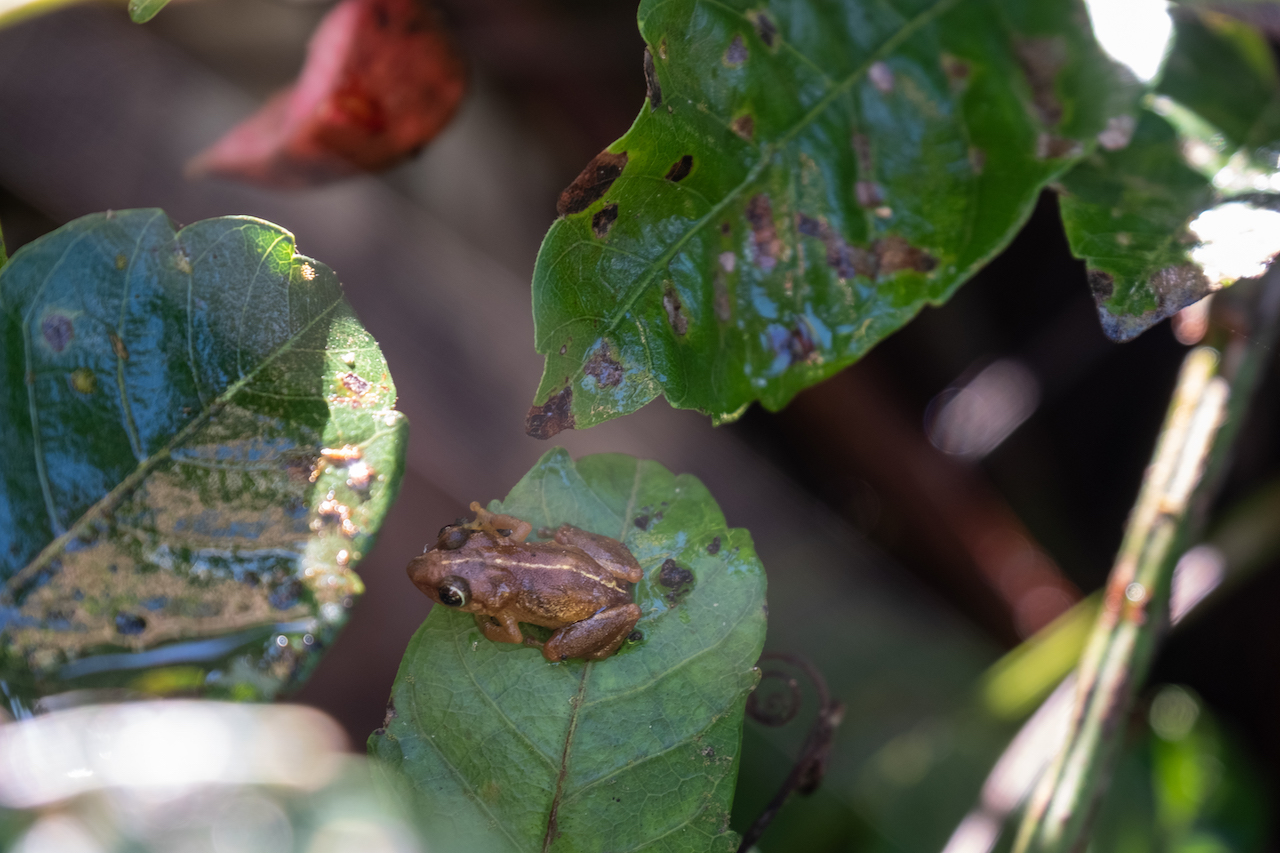The biologist and agronomist Alcides L. Morales Pérez entered the waters of the Caño Tiburones Natural Reserve in Arecibo to look for royal palm seeds and, without realizing it, he found the second population of llanero coquí, an endemic and endangered species of the Puerto Rican archipelago. This finding was corroborated and published in the scientific journal Herpetological Review, published by the Society for the Study of Amphibians and Reptiles.
Prior to this finding, it was believed that the llanero coquí inhabited only a wetland in Toa Baja. The Department of Natural and Environmental Resources (DRNA) categorized it as critically endangered and designated the habitat as critical, although this protection was rejected by the Supreme Court of Puerto Rico. The United States Fish and Wildlife Service (USFWS) has protected the species, declaring it endangered and designating critical habitat for its conservation.
Morales Pérez, who works for the non-profit organization Para la Naturaleza as Management Coordinator of the Hacienda La Esperanza Natural Reserve, heard the vocalization of the coquí llanero during a workday in Arecibo in 2022 and, at first, thought that it was a young common bananaquit. However, the sound seemed strange to him.
He then consulted with his colleagues at Para la Naturaleza, Omar Monzón Carmona, Conservation and Biodiversity specialist, and Carlos Andrés Rodríguez Gómez, herpetologist (amphibian and reptile specialist) and Ecodetour coordinator, who compared the sounds with the recorded vocalization as a reference for the llanero coqui.
Weeks later, Morales Pérez and Monzón Carmona, together with their colleagues Rodríguez Gómez, Daniel Montalvo Serrano, and biologist Louis Santiago Brevan, notified the USFWS in Puerto Rico of their discovery of this population of coquí llanero and requested permission from the agency to photograph the individuals found. Agency personnel visited the Caño Tiburones Nature Reserve in Arecibo to corroborate and determine conservation actions, according to Herpetological Review.
The llanero coquí specimens photographed include three eggs laid on the side of a leaf of the water arrow plant (Sagittaria lancifolia), a singing male, an adult female, and a juvenile. Another adult male was measured from an additional photo, as a scaled size reference.
This is the first find in the northern municipality and the second known locality for this species in Puerto Rico. Now its distribution extends to 49.7 kilometers of overhead line west of the town of Sabana Seca in Toa Baja.
“The identification of the habitats of this species is essential to find other viable populations in Puerto Rico,” added Rodríguez Gómez, co-author of this scientific note along with Montalvo Serrano and Santiago Brevan.
Smallest endemic species of coquí
This species was discovered in 2005 by Dr. Neftalí Ríos López and was named Eleutherodactylus juanariveroi, in honor of Dr. Juan A. Rivero, due to his multiple contributions to the study of amphibians and reptiles in Puerto Rico.
The llanero coquí (Eleutherodactylus juanariveroi) is characterized for being the smallest frog species in Puerto Rico, whose average size is 14.7 millimeters for males and 15.8 millimeters for females.
Its color ranges from light brown to yellow, with a yellow belly metallic, and has two conspicuous parotid (post-tympanic) glands. It has the lowest reproductive capacity among the Puerto Rican coquís, producing the smallest litters, averaging only three eggs per litter.
All documented reproductive events to date have occurred in the freshwater aquatic plant, known as Sagittaria lancifolia, and it does not appear to have parental care, since none of the egg litters found in its habitat have been observed with any adult covering or protecting it.
The vocalization frequency is the highest for amphibian species present in Puerto Rico (approximately 8 kHz), making it difficult to detect. Their vocalization is a high frequency “chip”.
Actions to ensure the protection of threatened species
To ensure the protection and health of the populations of this species, it is essential to conserve the habitats in which they are found, said Glorimar Toledo Soto, coordinator of Conservation and Biodiversity Projects at Para la Naturaleza. Toledo Soto explained that citizens have a duty to educate themselves about these ecosystems in order to interact with them responsibly and take informed actions to ensure their protection.
One way to get closer to these spaces is through guided tours by environmental interpreters and experts in biodiversity issues. Para la Naturaleza offers tours open to the public in Protected Natural Areas throughout the Puerto Rican archipelago, as well as volunteer and citizen science opportunities that allow us to directly participate in endangered species conservation efforts.
If you are interested in getting closer to nature, you can participate in our tours guided by environmental interpreters, or in volunteer and citizen science activities by visiting this link.

